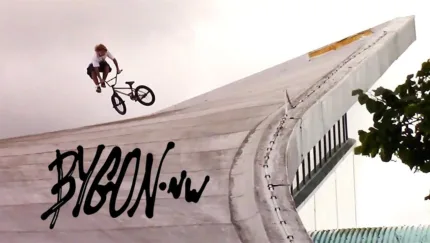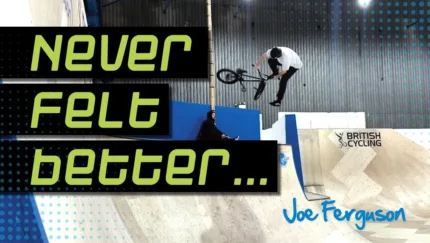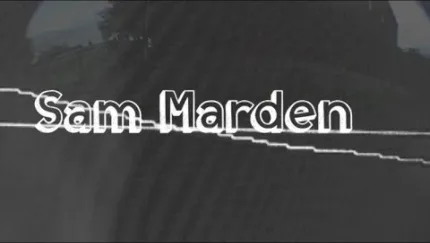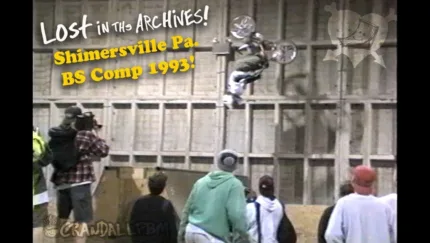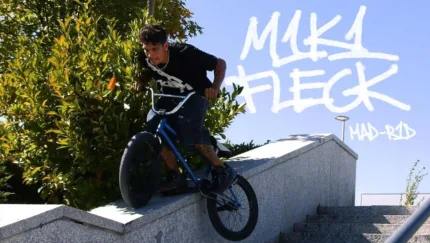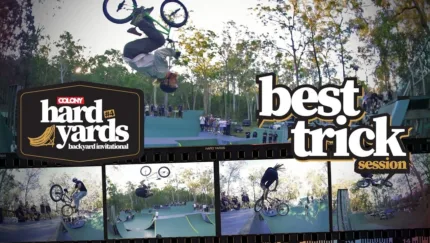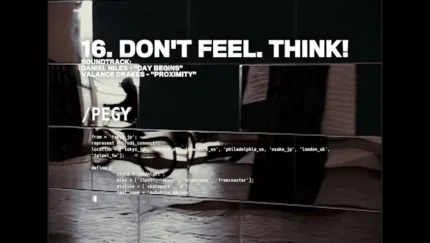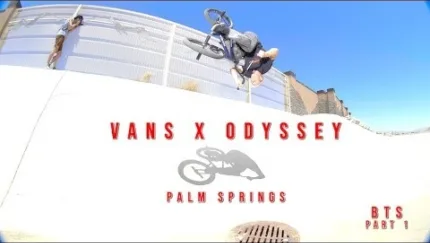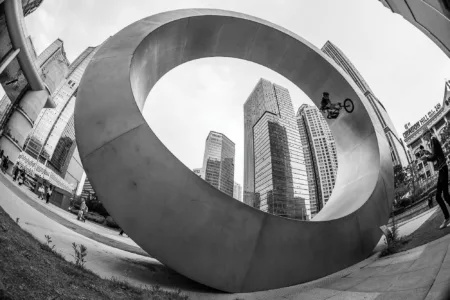
Rob Dolecki - Life After Print
“There will always be someone pointing a camera at bike riders... ”
Intro by Paul Robinson | Questions by Will Smyth | Originally published in DIG Magazine Issue 99.8 - 2017
— Survival is a primal instinct that’s rooted in every human being and at some point every person has to select an option that will least upset the course of his or her life. Decisions will need to be made, hard decisions that compromise creativity and passion eventually and possibly steering you away from your goal. Social media didn’t just happen overnight, it grew into what it is today and combined with the rate of hi-tech developments it formed a giant destructive monster that would rip open the stable landscape of BMX media and leave a strange and unfamiliar one in its wake.
— During this transition many BMX photographers realised they couldn’t earn a living doing what they did before. Magazines were not being printed because kids didn’t read or buy them due to information being already available on the web, and brands didn’t need to pay photographers for photos anymore. I don’t think anyone was fully aware at the time what was happening as social media was growing and video was becoming more and more exciting to the younger generation. Once legitimate media was being bypassed and it seemed like almost everyone was way too distracted by what was going on inside his or her phones to really care.
— Survival kicked in for the best BMX photographers at this point and sent them off in many different directions with a lot to think about. For DIG Magazine Issue 99.8 we spoke with with seven of the world’s most influential BMX magazine photographers of the past decade (and beyond), to find out just how those survival instincts affected them since the demise of their respective print titles, including our own, and how they manage to keep shooting. I think it was Barack Obama who said, “If you run you stand a chance of losing, but if you don’t run you’ve already lost.”
— First up is Rob Dolecki, a long time member of the DIG family, the man behind Maintain zine, and someone who is perhaps the most prolific BMX magazine photographer of the modern era.


The Rob Dolecki print magazine cover collection.
Was there a point when you noticed that BMX photography and print was becoming less relevant to the riders even before the demise of print?
Sure. The writing was on the wall years before Issue 99 came out and wrapped up DIG’s regular magazine run in 2014. Anyone could see the drastic shift that the internet was causing in the mid-2000s. It seemed like with every passing week, I was struggling more and more to keep the occasional photo-poacher from posting their catch online. The riding community’s primary media access was going through a transition that went from having to wait a few months or more to see some wild move in print or DVD, to easily seeing it via photo or video few days, hours, or now seconds later with a few clicks on a website or while scrolling through a feed; and it accelerated at an insane rate.
At that point, in order to keep magazines relevant (at least DIG, anyway), I guess I was hoping certain steps would happen for DIG to integrate print, website, and video in a proper way, where everything evolved together with the changing technology in a cohesive symbiosis. This was during the same time period when Factory Media bought 4130 Publishing (DIG’s prior publisher) and became the owner of the DIG title in 2009 (not by Will’s choice). After that happened, it quickly became clear that Factory didn’t see it at all in same way. They seemed to be under the assumption that their rapidly-becoming-outdated business model (even if it still worked at that time) had longevity along the lines of “’93 Til Infinity.” That song title obviously doesn’t apply to anything in media, then or now. So I just planned to ride it out until whenever it inevitably ended with Factory, and started preparing for potential full-time employment with a BMX company I was already involved with and working part-time at for a number of years. After Factory pulled the plug on DIG in early 2014, those plans didn’t work out.
Do you have to do any non-BMX work to get by nowadays?
Yeah, most of my income is non-BMX at the moment. If I still tried to rely solely on BMX work, I’d be living in a tent under I-95 and standing at the corner of Girard and Delaware Avenues, panhandling and holding a cardboard sign that says “Will work for expired film.”

Dolecki utilizing a Leap Year - Feb 29th 2016. Photo: Diego Parisi.
"The riding community’s primary media access was going through a transition that went from having to wait a few months or more to see some wild move in print or DVD, to easily seeing it via photo or video few days, hours, or now seconds later with a few clicks on a website or while scrolling through a feed; and it accelerated at an insane rate."
- Rob Dolecki
Tell us more about your current job setup and how you’ve had to adapt to stay involved as much as possible with shooting BMX.
I work part-time for DIG and part-time in rental property management, as well as whatever random odd jobs that I can come across, photo and non-photo related; that helps keep my living expenses covered.
As far as staying involved in shooting BMX, it’s always been, and continues to be, an incredible bonus when I get paid to shoot photos and travel (and video again, after a multi-year hiatus). But just like when I picked up a camera 20 years ago, enjoyment is the primary motivation, for better or worse. I often question why my life continues to essentially revolve around a two-wheeled vehicle. It’s just what I do; it’s one of my main hobbies, I guess. I kind of went full-circle to some degree in the span of 15 or so years.
With fewer and fewer people, if any, being employed exclusively as BMX photographers with any media outlet these days, do you think it will have an effect on BMX photography as a craft?
Possibly, to some degree? I think DIY zines, larger print projects in various forms (let’s get DIG 100 poppin’!), and events like photo shows are what will help keep photography relevant in BMX. Riding can always use more of that. At the end of the day, regardless if anyone gets paid or not, there will always be someone pointing a camera at bike riders, whether it’s someone doing a favor for a friend or someone who just enjoys photography as a hobby.

"If you’re looking to make a career out of shooting BMX, you might be in for a letdown. If you’re looking solely for the enjoyment of shooting BMX, then you might be on to something."- Rob Dolecki
In turn, do you think there’ll be any detrimental impact in documenting the history of BMX?
Speaking from a print/photo perspective, potentially. But then again, how many priceless artifacts have been lost over the years, like when a magazine goes out of business? I heard the story when Wizard Publications (publisher of BMX Action, Freestylin’, and GO) went under in 1992, they just threw countless binders of original prints/slides/negatives from the previous 15 years into a dumpster out back (Editors note: DIG was lucky enough to save a bunch of those at the time). Not to mention outside of a few select books like Generation F, and oldschoolmags.com archiving complete scans of many 70s and 80s-era magazines, I don’t think BMX has done the best possible job preserving history, in that respect. As history has repeatedly shown, who and what the industry chooses to support or not support may or may not help give significant direction, clarity, and historical relevance to BMX in a non-commercial way.
With everyone having a cell phone, so much is captured these days. So regardless of who is documenting and how it’s captured, the future of recording BMX history may be more about how recent, present, and future historical collections are archived and presented, more so than whether any pro photographers are around or not (though may not look as good). But will anyone actually care about that in the future?
Riding tricks are always in a state of perpetual progression, and the paradox of mainstream BMX history as we know it today is that outside of a few outliers, the latest NBD or new video section almost always takes precedence and relevance over any benchmark in the past, regardless if it was essential to open the door for what is possible today. It doesn't necessarily matter as much to me at this point, though. Since a lot of what I do BMX media-wise is on my dime and time these days, showcasing the real cultural aspects of riding that transcend any time period has become my more preferred focus.
What advice would you give to a young, up-and-coming BMX photographer?
If you’re looking to make a career out of shooting BMX, you might be in for a letdown. If you’re looking solely for the enjoyment of shooting BMX, then you might be on to something.
Do you think the great photographers get the credit they deserve for what they’ve contributed to BMX through print?
Not sure; since I shoot BMX photos, it’s not something I think about. In my mind, there is an extensive list of photographers who deserve any and all the credit they do get and then some, like Windy Osborn, Spike Jonze, Chris Hallman, Ricky Adam, and Jeff Z., to name a few.
The past aside, there’s a growing movement of photographer/riders doing their own thing via DIY zines, like Red Steps in the UK, Ride PA BMX, and Challenger, to name a few. As long as there are people doing something creatively with a pure spirit fueling the intentions, no mater how insignificant it may seem compared to the endless barrage of mainstream nonsense going on, then BMX (and by extension, BMX photography) is doing alright.

Previous
Burns, Baby... Burns.
A DIG 99.8 RE-PRINT
Next
"The division is unreal" Catching Up With Greg Illingworth
SA's high-speed golden child gets political...
Related Content











